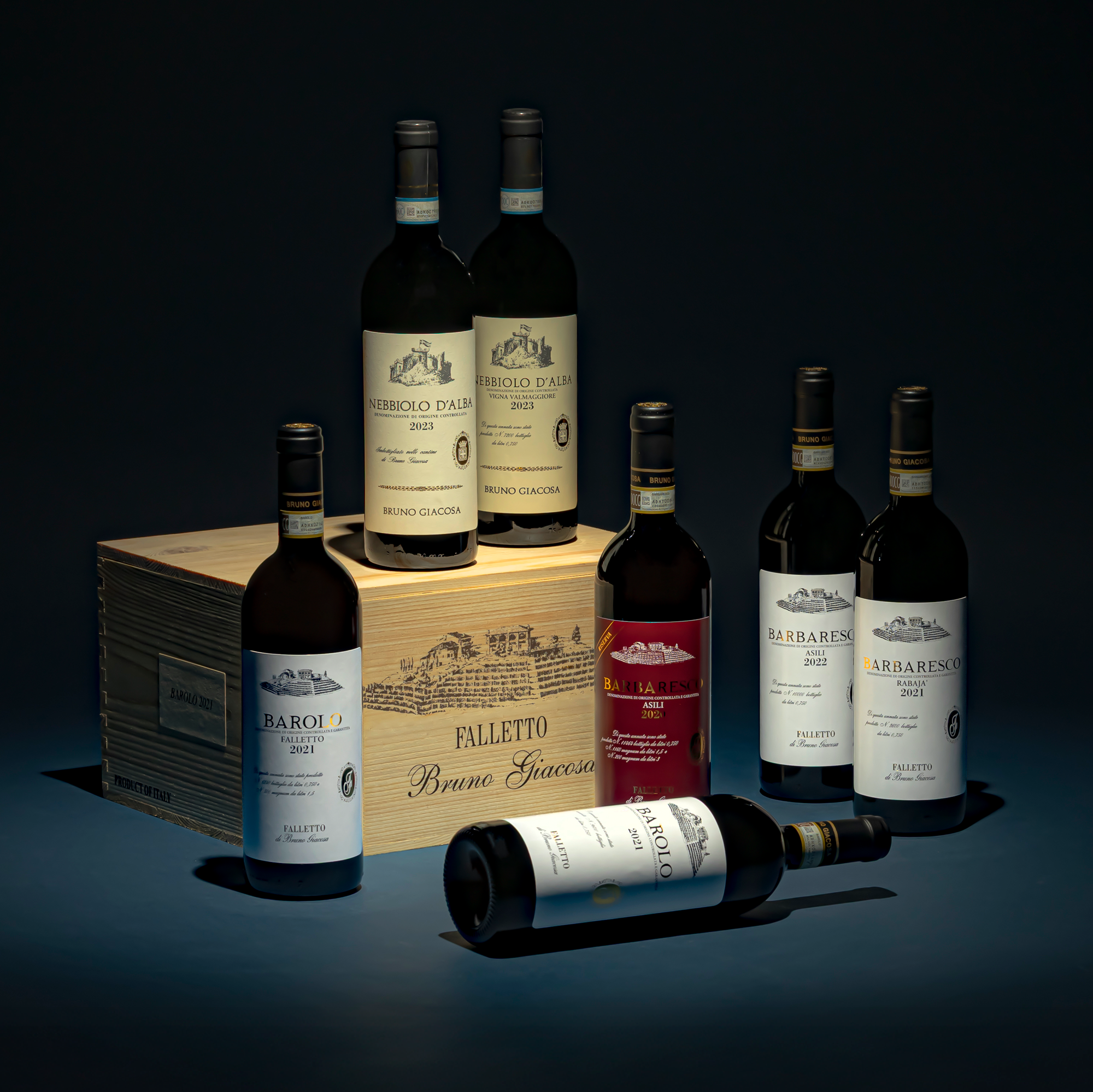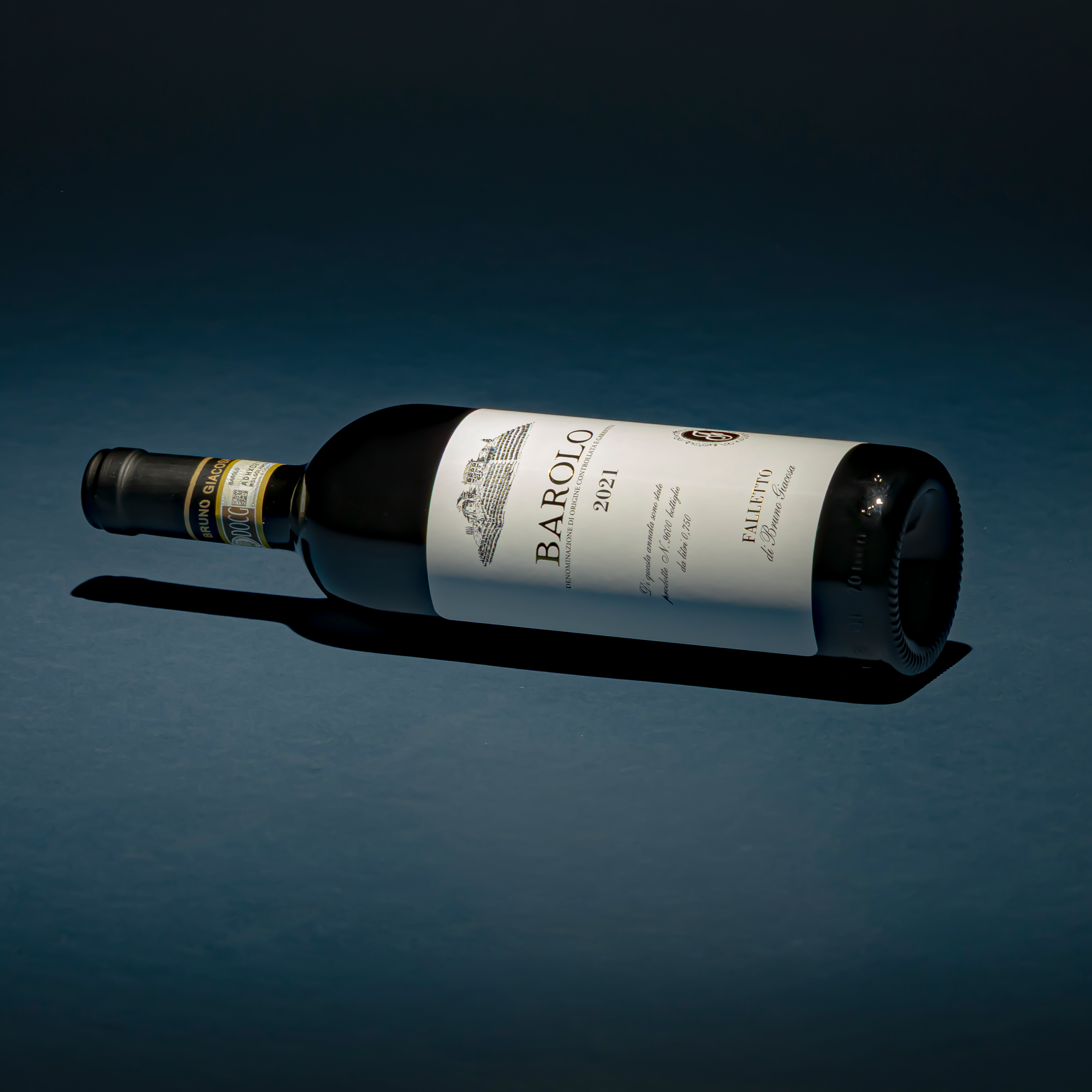Bruno Giacosa

A Langhe Legacy
A certain mythological folklore surrounds the Giacosa name. Bruno Giacosa paved his own path through the Langhe hills, heralding him as one of the greatest winemakers to exist today. But reaching back into the depths of his early winemaking career, his recorded steps seems to have caused a scratch to the head or a stroke of the chin by his peers. While his avoidance of the norm did not make sense at the time, it later would, and along the way transform him into an allegorical figure that would fuse to his legacy.
Barolo and Barbaresco Unlike Any Other
Bruno Giacosa’s wines stand in a league of their own. It all began when he stepped into the shoes of a ‘Commerciante,’ or a ‘Grape Broker’—ones his father wore alongside him. In the concluding years of World War II, Bruno left school at just 15 to assist his father in the vineyards of Langhe, where he developed a dream of bottling high-quality wine himself, rather than passing grapes onto producers he crossed paths with. But he would have to wait for his father’s blessing to do so.
While his father’s ‘approval’ didn’t necessarily ever come to fruition, the blessing he waited for did. And in 1964, his first ever labelled cru bottling came—the Barbaresco Vigna Santo Stefano. One could say the 'rest is history' as this long-awaited move was one that led to some of the greatest Barolo and Barbaresco one could possibly taste in their lifetime.
Even though Bruno stepped into the producer realm, his heart continued to gravitate toward the craft of selecting parcels of fruit rather than owning them. Whispers formed around his “mistake” in not growing his own grapes—a move many others at his level were doing at the time.
But his ability to seek out vines that produced the pinnacle of “famed” wine was something of its own craft. One that resulted in some of his most famous bottlings from Santo Stefano di Neive, Villero and Collina Rionda—none of which remain to be produced by the estate. In fact, him not being tied to specific vineyards for so long was the reason he was able to produce some of the best wines in the world.
While his father’s ‘approval’ didn’t necessarily ever come to fruition, the blessing he waited for did. And in 1964, his first ever labelled cru bottling came—the Barbaresco Vigna Santo Stefano. One could say the 'rest is history' as this long-awaited move was one that led to some of the greatest Barolo and Barbaresco one could possibly taste in their lifetime.
Even though Bruno stepped into the producer realm, his heart continued to gravitate toward the craft of selecting parcels of fruit rather than owning them. Whispers formed around his “mistake” in not growing his own grapes—a move many others at his level were doing at the time.
But his ability to seek out vines that produced the pinnacle of “famed” wine was something of its own craft. One that resulted in some of his most famous bottlings from Santo Stefano di Neive, Villero and Collina Rionda—none of which remain to be produced by the estate. In fact, him not being tied to specific vineyards for so long was the reason he was able to produce some of the best wines in the world.
Refusal to purchase his own vineyard was only one of many decisions that caught people’s attention. Confusion formed around his decision to not bottle any Barolo in 2010, but rather sell it in bulk, leaving a Vigna Le Rocche del Falletto to exist somewhere in the world under another label. Or, his production of Barolo and Barbaresco stemming from the same vineyard. While this is not uncommon today, it was not a move others were making at the time. These were mysteries that turned his name, and legacy, into a mythology.
He eventually did purchase his own vineyard, Falletto di Serralunga, and acquired two of the finest sites in all of Langhe—Asili in Barbaresco and Falletto in Barolo. In more recent years, Rabaja joined the rankings as an extension to the vineyards belonging to the Giacosa name.
The estate remains in family hands as his daughter Bruna continues to work with grapes from long-time suppliers for their Casa Vinicola labels. Gossip around Giacosa continues, but this time of Bruna and how her approach resembles that of her father’s, allowing his original legacy to live on.
To acquire such an allocation is a privilege, and one we would not keep in the shadows. These coveted cuvées are only an arm’s length away, and available online for the first time ever.
He eventually did purchase his own vineyard, Falletto di Serralunga, and acquired two of the finest sites in all of Langhe—Asili in Barbaresco and Falletto in Barolo. In more recent years, Rabaja joined the rankings as an extension to the vineyards belonging to the Giacosa name.
The estate remains in family hands as his daughter Bruna continues to work with grapes from long-time suppliers for their Casa Vinicola labels. Gossip around Giacosa continues, but this time of Bruna and how her approach resembles that of her father’s, allowing his original legacy to live on.
To acquire such an allocation is a privilege, and one we would not keep in the shadows. These coveted cuvées are only an arm’s length away, and available online for the first time ever.

The estate remains in family hands as his daughter Bruna continues to work with grapes from long-time suppliers for their Casa Vinicola labels. Gossip around Giacosa continues, but this time of Bruna and how her approach resembles that of her father’s, allowing his original legacy to live on.